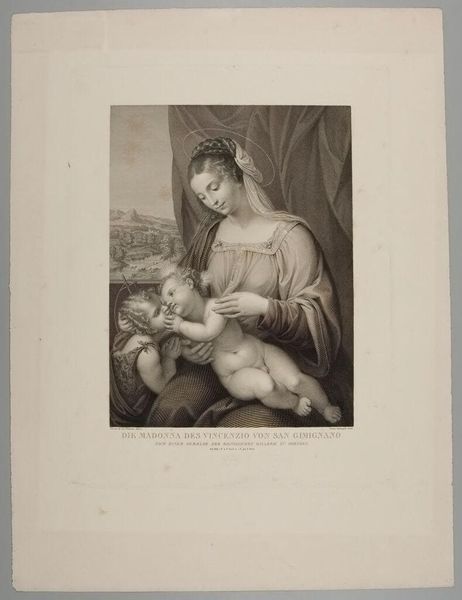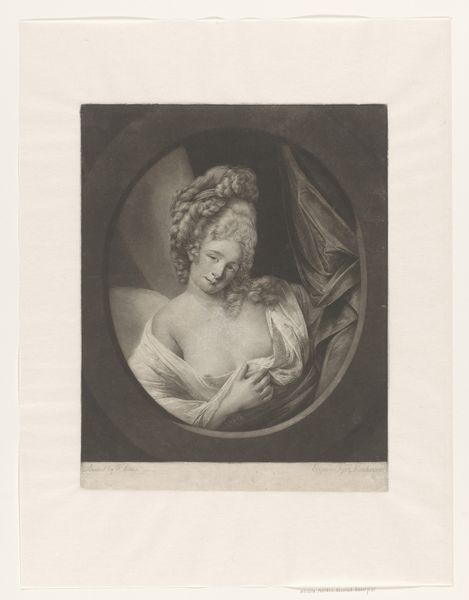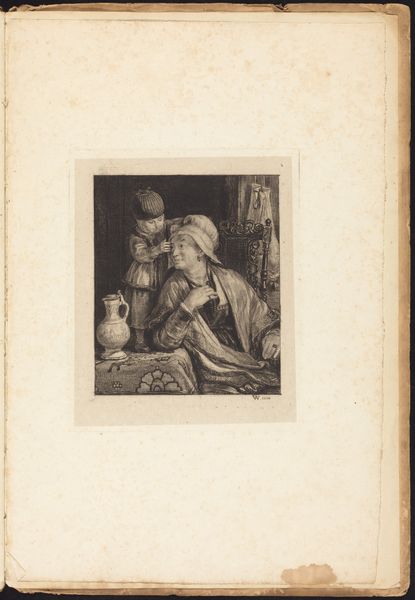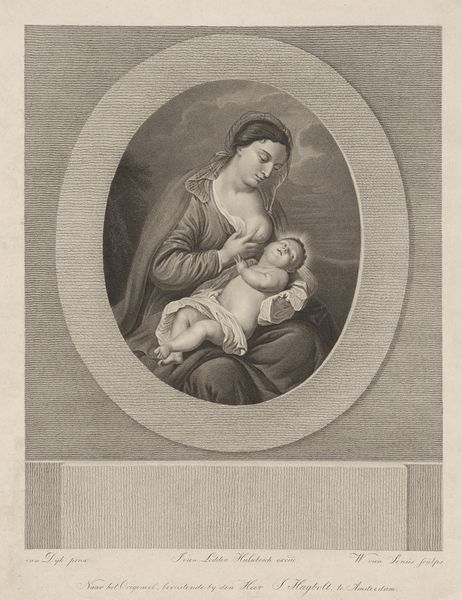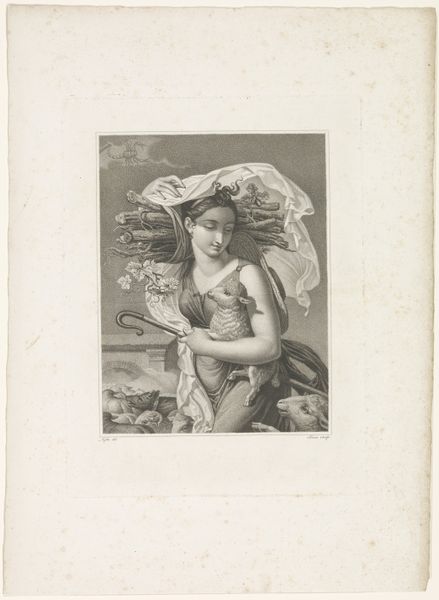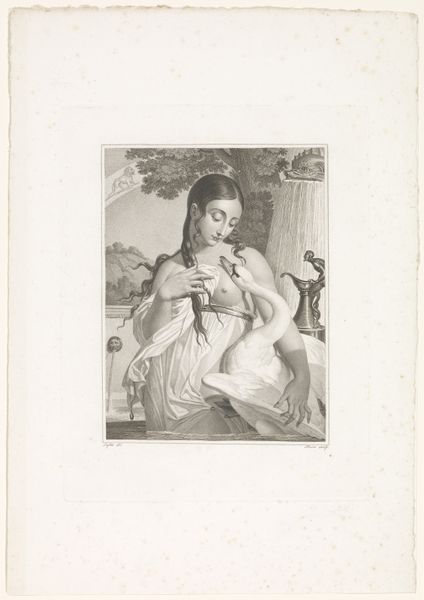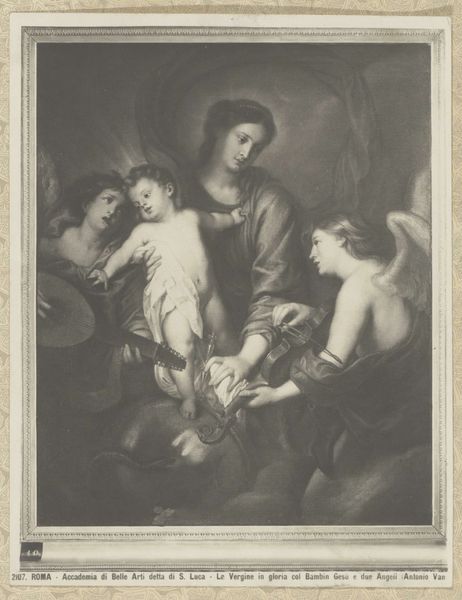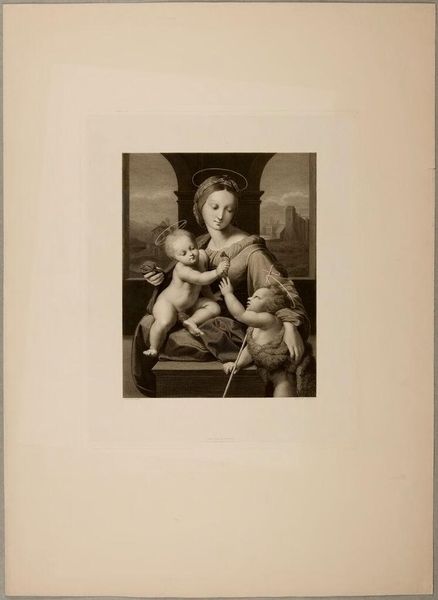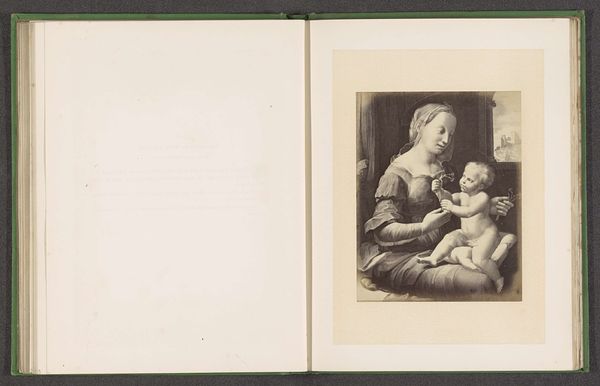
Fotoreproductie van het schilderij Maria met Christuskind en Johannes de Doper door Vincenzo Tamagni da San Gimignano before 1875
0:00
0:00
photography, gelatin-silver-print
#
portrait
#
photography
#
gelatin-silver-print
#
italian-renaissance
Dimensions: height 247 mm, width 181 mm
Copyright: Rijks Museum: Open Domain
Editor: This photograph, a gelatin silver print dating from before 1875, captures Vincenzo Tamagni’s painting "Maria with Christ Child and John the Baptist." The photograph’s sepia tones give it such a nostalgic feel. How do you interpret this reproduction of a Renaissance painting through a photographic lens? Curator: It's fascinating how photography, a relatively new medium at the time, seeks to capture and translate the visual language of the Renaissance. Think about what symbols endure here: the Madonna and child, and the infant Saint John. This composition echoes centuries of religious iconography, these images would have a heavy weight in people’s minds and carry connotations. Do you notice how those symbols might shift slightly when reproduced photographically? Editor: I guess I see it still has that feeling of reverence, but maybe made more… accessible? Less about pure divinity and a little more human? Curator: Precisely. Photography, even of religious subjects, had a grounding effect. Consider how the shift from paint to photography might change the viewer’s relationship with these holy figures. The availability, reproducibility... does it amplify or dilute the original intention? Editor: That’s interesting! I never thought about how the medium itself affects the message. The photo flattens the painting, maybe creating a sense of distance even as it makes the artwork more accessible. Curator: Yes! The layers of representation--painting, then photograph--create new meanings that circulate through visual culture. The cultural memory held in the image changes form and context. What remains, and what shifts? Editor: It really makes you think about the long life an image can have, and how each stage transforms it a little. Curator: Indeed. Seeing how a Renaissance theme gets repackaged in the 19th century helps us appreciate the complex story these symbols continue to tell.
Comments
No comments
Be the first to comment and join the conversation on the ultimate creative platform.

